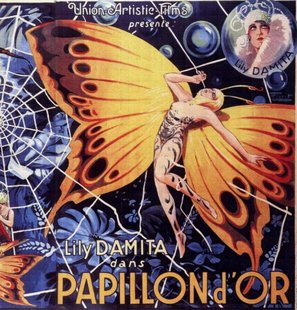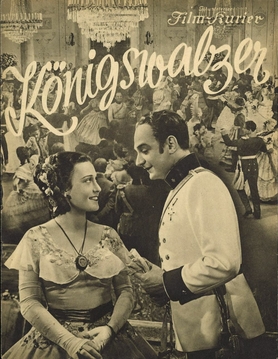
Elfriede "Elfi" von Dassanowsky was an Austrian-born singer, pianist and film producer.

Robert von Dassanowsky FRHistS, FRSA is an Austrian-American academic, writer, film and cultural historian, and producer. He is usually known as Robert Dassanowsky.

Alexander Lernet-Holenia was an Austrian poet, novelist, dramaturgist and writer of screenplays and historical studies who produced a heterogeneous literary opus that included poetry, psychological novels describing the intrusion of otherworldly or unreal experiences into reality, and recreational films.
Fritz Schulz was a German and Austrian movie and stage actor, singer and director.

Cinema of Austria refers to the film industry based in Austria. Austria has had an active cinema industry since the early 20th century when it was the Austro-Hungarian Empire, and that has continued to the present day. Producer Sascha Kolowrat-Krakowsky, producer-director-writer Luise Kolm and the Austro-Hungarian directors Michael Curtiz and Alexander Korda were among the pioneers of early Austrian cinema. Several Austrian directors pursued careers in Weimar Germany and later in the United States, among them Fritz Lang, G. W. Pabst, Josef von Sternberg, Billy Wilder, Fred Zinnemann, and Otto Preminger.

Young Medardus is a 1923 Austrian silent historical drama film directed by Michael Curtiz and starring Victor Varconi, Egon von Jordan and Agnes Esterhazy. Based on a play with the same name by Arthur Schnitzler, it is set during the 1809 French occupation of Vienna during the Napoleonic Wars.

The Golden Butterfly is a 1926 Austrian-German silent drama film directed by Michael Curtiz and starring Hermann Leffler, Lili Damita and Nils Asther. It was based on the 1915 short story "The Making of Mac's" by British author P. G. Wodehouse. The film was released in the United Kingdom as The Golden Butterfly, in a form shortened to 5 reels, and had a limited release in the US under the title The Road to Happiness.
Elfriede, also known as Elfreda, Elfrida, Alfrida, Elfrieda, Elftrude, Elftraut among other variants, is a female given name, derived from Ælfþryð (Aelfthryth) meaning "elf-strength". The name fell out of fashion in the Middle Ages and was revived in the 19th century in both England and Germany. Although some of its modern forms like Alfieda can be mistaken for feminine versions of Alfred, that derives from Ælfræd. The Southern German diminutive Friedel or Friedl is nowadays more common than the full name.

The Royal Waltz is a 1935 German musical film directed by Herbert Maisch and starring Paul Hörbiger, Curd Jürgens, and Carola Höhn. It was shot at the Babelsberg Studios of UFA in Berlin. The film's sets were designed by the art directors Robert Herlth and Walter Röhrig. A separate French-language version Royal Waltz was also released. It was remade in 1955 under the same title.

Gently My Songs Entreat is a 1933 Austrian-German musical film directed by Willi Forst and starring Marta Eggerth, Luise Ullrich and Hans Jaray. The film was shot at the Sievering Studios in Vienna with art direction by Julius von Borsody. The film is a biopic of the composer Franz Schubert (1797–1828). It was Forst's directorial debut. A British version was made called Unfinished Symphony. The German title refers to the first line of the Lied "Ständchen" (Serenade) from Schubert's collection Schwanengesang, "the most famous serenade in the world", which Eggerth performs in the film.
Albrecht Joseph (1901–1991) was a German playwright, screenwriter and film editor.
Sievering Studios were film production studios located in Sievering, a suburb of the Austrian capital Vienna.
Don Cesar, Count of Irun is a 1918 Austrian silent historical film directed by Jacob Fleck and Luise Fleck and starring Max Neufeld, Grit Haid and Karl Ehmann. It is based on the opera Don César de Bazan by Philippe Dumanoir and Adolphe d'Ennery, based on an earlier work by Victor Hugo. It was made and released during the closing stages of the First World War.

Count Bobby, The Terror of The Wild West is a 1966 Austrian musical comedy film directed by Paul Martin and starring Peter Alexander, Olga Schoberová and Gunther Philipp. It was the last in a trilogy of films featuring the character Count Bobby. It drew some inspiration from the ongoing series of Karl May film adaptations set in the Wild West.

The Sweet Life of Count Bobby is a 1962 Austrian musical comedy film directed by Géza von Cziffra and starring Peter Alexander, Ingeborg Schöner and Gunther Philipp. It was the second in a trilogy of films featuring Alexander in the character of Count Bobby. It was followed by Count Bobby, The Terror of The Wild West in 1966.

The Adventures of Count Bobby is a 1961 Austrian comedy film directed by Géza von Cziffra and starring Peter Alexander, Vivi Bach and Gunther Philipp. It was the first in a trilogy of films featuring the character Count Bobby.
Hanns Sassmann (1882–1944) was an Austrian playwright, journalist and screenwriter. He was active in both German and Austrian cinema during the Nazi era.

The Count of Saint Germain is a 1948 novel by the Austrian writer Alexander Lernet-Holenia. It regained the author's pre-war popularity and dealt with the issues of the Anschluss and war guilt.
Twentieth of July is a 1947 novella by the Austrian writer Alexander Lernet-Holenia. During the Nazi era an aristocratic Austria woman lends her papers to a Jewish acquaintance, only to find herself without an identity when the woman dies.

The Happiness of Grinzing is a 1933 Czech musical film directed by Otto Kanturek and starring Iván Petrovich, Gretl Theimer and Alfred Gerasch. It was produced in German and several of the cast and crew had recently left Germany following the Nazi takeover there. It was shot at the Barrandov Studios in Prague. The film's sets were designed by the art director Bohumil Heš. A separate Czech-language version, In the Little House Below Emauzy, was also shot at the same time. Such multiple-language versions were common during the early years of sound film before dubbing became more widespread. In German-speaking parts of Czechoslovakia it was released under the title Das Häuschen in Grinzing.













